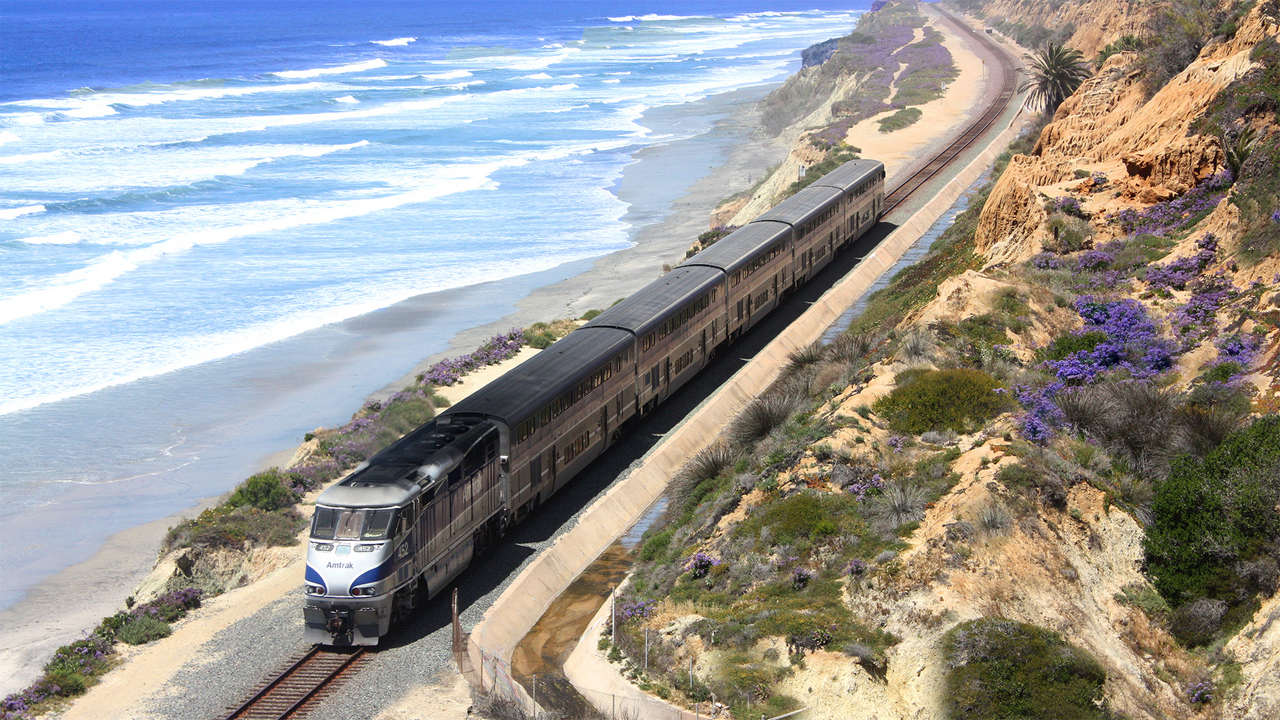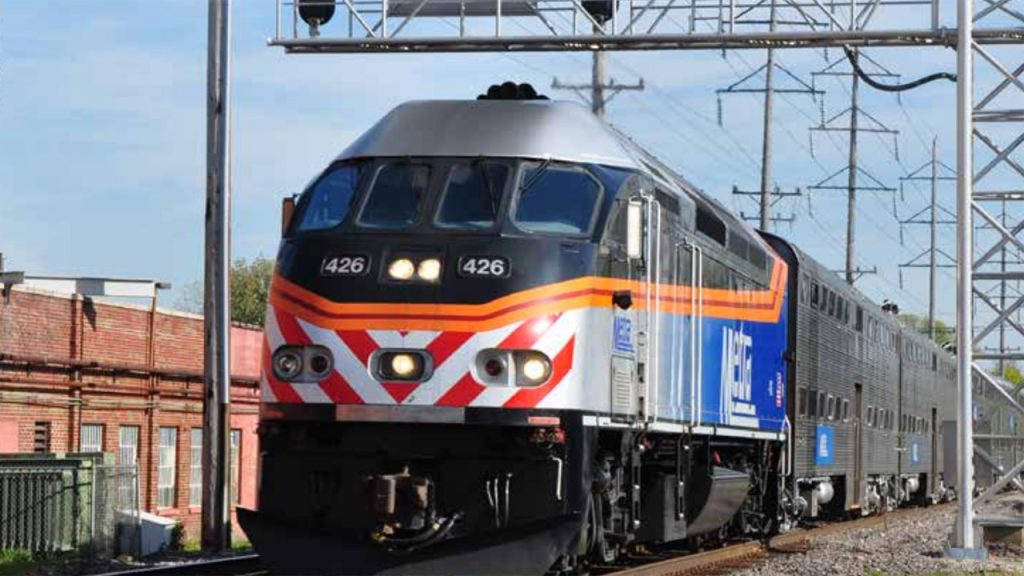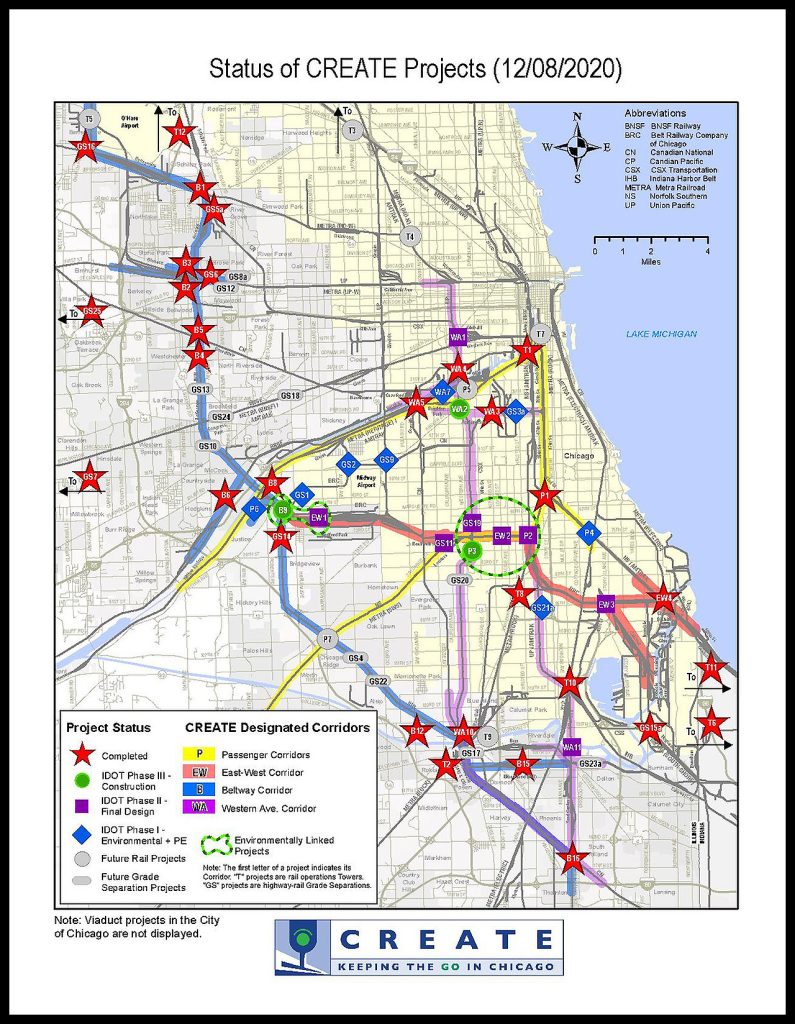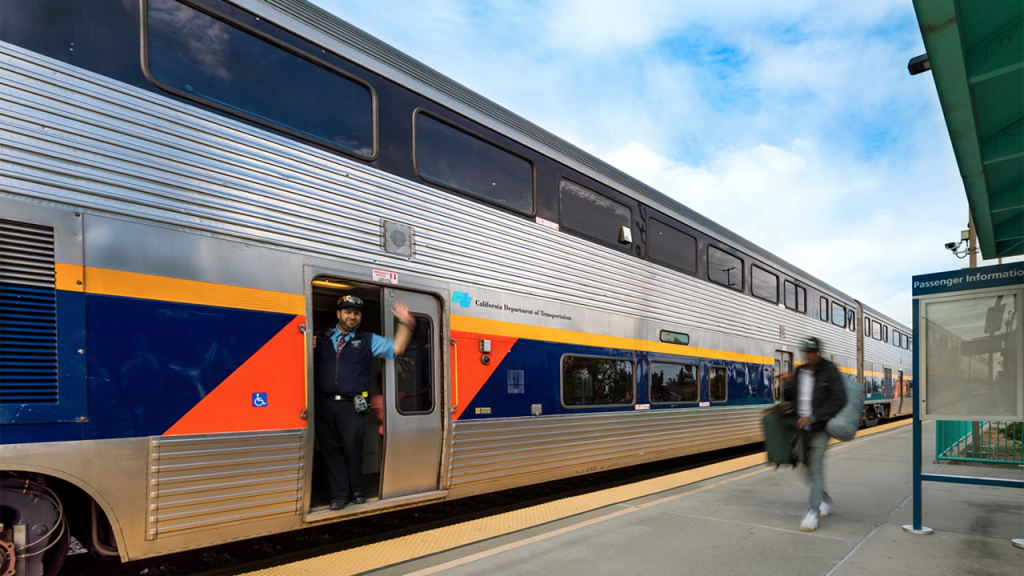
Reciprocal Switching’s Potential Impact on Passenger Rail (UPDATED)
Written by Marybeth Luczak, Executive Editor
The LOSSAN Rail Corridor Agency—manager of the Pacific Surfliner route between San Diego, Los Angeles and San Luis Obispo, Calif.—is one of three California agencies that partnered last fall to form CIRCLE, an advocacy coalition.
Two passenger rail organizations are urging the Surface Transportation Board (STB) to “carefully consider” how its proposed reciprocal switching regulations would impact their operations as well as investment.
Chicago’s Metra and CIRCLE—an advocacy coalition of the three California agencies that manage Amtrak’s Capitol Corridor, Pacific Surfliner and San Joaquins intercity passenger rail services—submitted letters this month to the STB in advance of its March 15-16 hearing on reciprocal switching.
STB first proposed reciprocal switching regulations in 2016 and was encouraged to review them by a 2021 Executive Order on competition.
This potential STB decree means “that a railroad with sole physical access to a shipper facility transfer (switch) a shipper’s cars to a junction point with a second (competing) railroad,” explains Railway Age Capitol Hill Contributing Editor Frank N. Wilner. “The second railroad pays a compensatory per-car switching fee whose reasonableness is determined by the STB.
“To obtain reciprocal switching—known as ‘interswitching’ in Canada, where it has been in use for more than a century—the shipper must prove to the STB that the reciprocal switch is feasible and necessary to enhance competition.”

Metra to STB: ‘Ensure Smooth, Reliable Transportation’
Metra CEO/Executive Director Jim Derwinski in a Feb. 10 letter asked STB to “carefully consider the potential impacts—both immediate and over the long term—that [its] ruling may have on passenger rail operations in the Chicago area,” which he called “the nation’s largest rail gateway, hosting more than 500 freight and 800 passenger trains every day” (download letter below).
As part of its operations over 11 routes totaling nearly 500 route-miles, “Metra works closely with its freight railroad partners to ensure network fluidity, while striving to keep all trains—freight and passenger alike—on schedule, and at the same time, enhancing our operating environment to the benefit of all parties,” Derwinski wrote. “Metra supports maintaining fluidity and minimizing congestion on the rails within the Chicagoland region. On-time performance in the commuter rail space is measured in minutes, and delays due to freight train interference, especially during peak service periods, can have a cascading effect on commuter operations, and a devastating effect on the daily lives of our customers.

“Your consideration of Commuter and Intercity Rail Passenger service when ruling on this issue will help ensure smooth and reliable transportation for Chicagoland rail passengers for many years to come.”

CIRCLE to STB: Don’t Add ‘Unneeded Complexity’
California’s Intercity Rail Corridors Linking Everyone (CIRCLE) coalition—founded last fall by Capitol Corridor Joint Powers Authority, Los Angeles–San Diego–San Luis Obispo Rail Corridor Agency, and San Joaquin Joint Powers Authority—told STB that over the last 40 years, the state has invested more than $7 billion to improve its intercity passenger rail network. “We have collaborated closely with local stakeholders, state funding partners, freight railroads, and our service operator Amtrak in successfully planning and implementing capital investments to enhance our services,” the group wrote in a Feb. 9 letter (download below). “In addition to our state investment, we are anxiously anticipating the historic investments proposed by the [Infrastructure] Investment and Jobs Act (IIJA). This unprecedented surface transportation reauthorization provides needed investments in our passenger railroad network, and we look forward to working closely with our stakeholders to expand and enhance intercity services in our state.
“As proposed, the reciprocal switching NPRM [Notice of Proposed Rulemaking, released in 2016] would risk the progress we have made as a state and nation in sustainable passenger rail infrastructure investments and add unneeded complexity to passenger railroad operations.
“Freight railroads operate in a highly competitive and complex freight transportation environment. In order to remain competitive—as well as to improve railroad safety and network fluidity—freight railroads constantly invest in their infrastructure to maintain a state-of-good-repair and expand service.
“We are concerned that the NPRM would create disincentives for continued investment in our national railroad network. Our agencies require reliable, safe, and maintained freight railroad infrastructure to serve our passengers. Additional uncertainty in railroad infrastructure investment, especially during an unprecedented opportunity and time to expand and enhance passenger railroad infrastructure and connectivity, would risk so much of the progress we as a state and nation have made in recent years.
“Our agencies work closely with Union Pacific Railroad (UPRR) and BNSF Railway (BNSF) to maintain and expand scheduling windows for passenger trains, ensure network fluidity, and enhance our operating environment to the benefit of all parties. Implementation of a reciprocal switching regulation would significantly increase interchanges of freight cars, adding unnecessary operational complexities, and compromise the efficiency and fluidity of both freight and passenger rail operations.
“These changes would not only harm freight rail; increased network congestion and complexity would have impacts on intercity passenger operators and overseeing state agencies, who rely on freight railroad tracks to operate. We believe the STB should strive to ensure freight rail operations remain as efficient and fluid as possible in order to encourage continued and new investments in our passenger railroad network, especially during a historic time for passenger railroad investment, and maintain and expand scheduling opportunities for passenger rail trips.”



